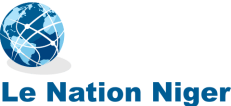KEY FIGURES (AS OF 31 DECEMBER 2022)
4.92M Refugees and Asylum-seekers
13.49M Internally Displaced Persons
166,383 Refugee Returnees in 2022
OPERATIONAL ENVIRONMENT
The East and Horn of Africa and the Great Lakes (EHAGL) region is host to some 4.92 million refugees and asylum-seekers, as at the end of December 2022. The region also has 13.49 million Internally Displaced Persons (IDPs) mostly in Ethiopia, Sudan, Somalia, South Sudan, and Burundi, displaced due to both conflict and natural disasters. A total 166,383 refugees returned to their countries of origin in 2022.
KEY DEVELOPMENTS
SITUATIONAL UPDATES
DROUGHT SITUATION: The Horn of Africa region continues to experience the longest and most severe drought on record, threatening the lives of millions. Relentless drought and high food prices have weakened many people’s ability to grow crops, raise livestock and buy food. The food insecurity situation in drought affected areas is expected to persist in 2023, driving high humanitarian needs throughout the year, with a high likelihood of a sixth failed rainy season in March-May 2023. Harvests have yielded little and water sources have dried up. As conditions continued to worsen, hundreds of thousands of people have been forced to flee in search of water, pasture and assistance.
According to UNHCR’s latest dashboard of displacement affected populations, by the end of December 2022, some 1.70 million had been internally displaced in Somalia and Ethiopia, while over 93,000 refugees have crossed borders from Somali and South Sudan into drought affected areas of Kenya and Ethiopia this year.
UNHCR’s High Commissioner undertook a mission to Kenya and Somalia from 19-25 October to bring attention to critical requirements and funding gaps in the region. He called on global leaders to spare no efforts in assisting countries in the Horn of Africa to break the cycle of conflict and climate crises. In Galkacyo, Somalia, the High Commissioner met families who had trekked for days to reach displacement sites and heard stories of survival, such as leaving behind loved ones or selling their assets to feed their children, and the particular consequences for women and children. In Kenya, the High Commissioner visited refugees in Dadaab and Kakuma, meeting with local and county authorities, host community members and partners. In Dadaab, the High Commissioner saw first-hand how the drought is impacting refugees and host communities alike, and the particularly difficult situation for new arrivals. The High Commissioner met with the Presidents of both Kenya and Somalia and expressed UNHCR’s commitment to supporting the countries to pursue solutions for those who have been displaced.
UNHCR will release an updated regional drought appeal for 2023. In June 2022, UNHCR released a regional Drought Response Emergency Appeal for the Horn of Africa, requesting US$42.6 million for the remainder of 2022 to address critical humanitarian needs for some 1.5 million refugees, internally displaced people and local host communities affected by the drought in Ethiopia, Kenya, and Somalia. By the end of the year, UNHCR had received approximately 48% of the requested amount, based on earmarked and unearmarked contributions to the three countries.
Somalia is at the epicenter of a climate emergency that is showing little signs of abating and is uprooting lives and livelihoods of millions. Five consecutive below par rainy seasons, brought about by climate change, has resulted in the longest drought the country has witnessed in more than 40 years. According to the UNHCR-led Protection and Return Monitoring Network (PRMN), the catastrophic drought displaced close to 1.2 million in 2022 (with additional displacement caused primarily by conflict). Thousands of
Somalis have also fled to neighbouring countries to seek assistance. Many people have lost their livelihoods and their coping capacities have been stretched too thin to recover from the drought. The situation is further compounded by persistent insecurity and armed conflict, soaring food prices, and extreme poverty. These multiple shocks have exacerbated protection risks and pre-existing inequities.
UNHCR’s Special Advisor on Climate Action undertook a four-day visit to Somalia between 11-14 December on the invitation of the Director of the Inter-Governmental Authority on Development (IGAD)’s Center of Excellence for Climate Adaptation and Environmental Protection. UNHCR with work with IGAD and other relevant stakeholders on the development of a regional climate adaptation strategy to pave the way for sustainable climate action engagements to build the resilience of affected populations.
In Ethiopia, the drought conditions continue to affect the lowland areas in the south and south-east of the country, where the crisis is having a devastating impact on the lives and livelihoods of pastoralist and agro-pastoralist communities. In the three most droughtaffected regions of Ethiopia, (Somali, Oromia and Southern Nations, Nationalities, and Peoples (SNNP)) UNHCR is prioritizing 763,000 internally displaced persons (IDPs) and 304,000 refugees and host community members for immediate response. The vast southern reaches of Ethiopia, which border Kenya and Somalia, are on the frontline of this crisis. The people who live in places such as in the Borena Zone in Oromia region on the border with Kenya are now heavily reliant on humanitarian aid. As of December 2022, an estimated 12 million people remained food insecure, while nearly 9 million people have been targeted for water, sanitation and hygiene (WASH) assistance across the drought-affected areas, according to OCHA.
In Kenya, on 21 November, UNHCR joined the Kenyan Government in launching the drought flash appeal alongside the county and national government and other state and non-state actors in Garissa County. The event included the Kenyan Deputy President, the UN Resident Coordinator, and local area MPs, aimed at raising funds to support the drought affected ASAL (Arid and Semi-arid Lands) counties. In November, UNHCR, together with UNICEF and WFP took part in advocacy meetings with the regional County Commissioner and the Garissa Governor on matters of security and drought interventions, including on the new influx from Somalia and the subsequent re-opening of the former Ifo 2 refugee camp as a new integrated settlement.
Source: UN High Commissioner for Refugees
